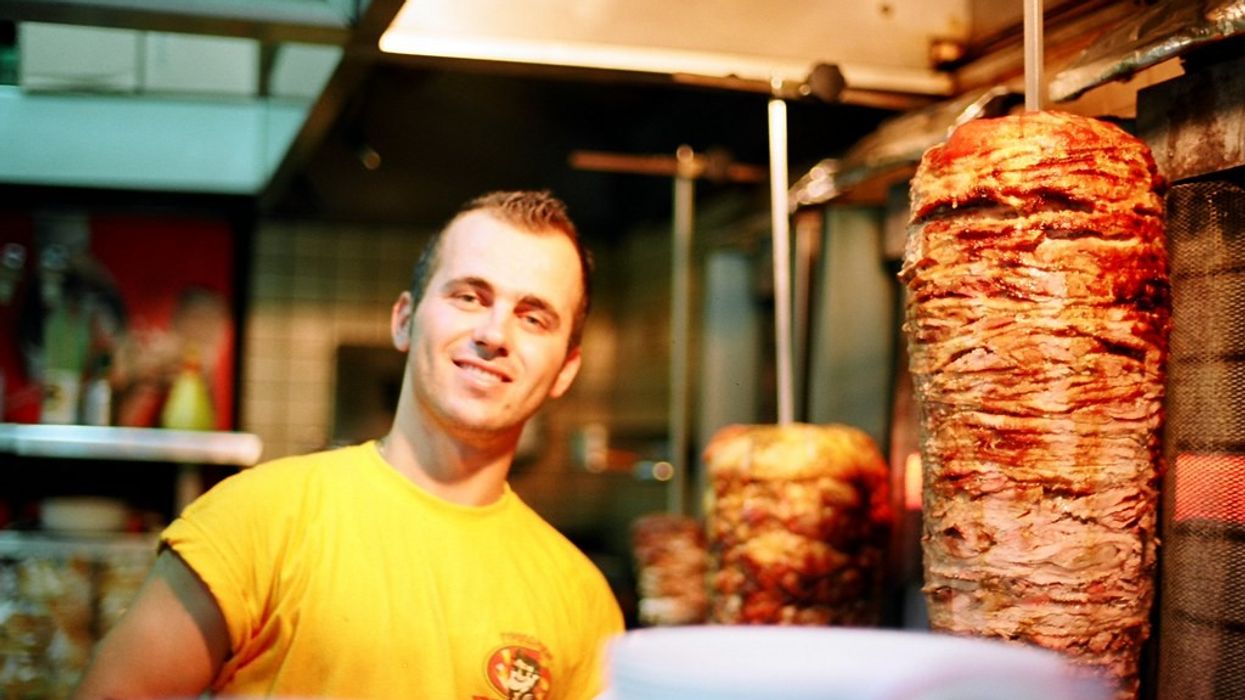Occupy Wall Street is entering its fourth week of protesting corporate greed from New York City’s Zuccotti Park. Last week, the movement’s ranks swelled above 10,000. That’s a lot of mouths to feed. From the start, Occupy Wall Street’s Food Committee has taken on the logistical challenge of feeding its ever-growing participants by calling for donations, encouraging newcomers to bring food to share, and extolling the virtues of the quick and portable peanut butter sandwich. But the movement has yet to find its signature dish.
The history of countercultural movements can be told through their stomachs. Sustenance is an oppressed group’s most basic demand, and protesters have often employed it to help voice their beef with the mainstream. The rising cost of bread and salt helped set off the French Revolution. Salt was a key element in Gandhi’s nonviolent protest against the British. Sixties-era communards gathered around recipes like “Heart in Surprising Sauce” or “Brotherhood Spirit in Flesh Soup.” Even Coca-Cola took on a symbolic role during the lunch counter sit-ins of the 1960s. Before it was reclaimed by the modern-day Republican fringe, the Tea Party was, of course, an 18th century protest against tea taxes.
Today, Wall Street protesters grapple with their own food issues. On We Are the 99 Percent—a Tumblr that sprang from the in-person occupation—Americans detail their struggles to survive on food stamps and stave off hunger. “Half the month I can’t afford food,” one protester writes. One 8th grade girl says that at her family dinner table, she’s quietly “stopped eating a lot so there’s more food for everyone else.” Wall Street protesters have been criticized for lacking focus, but big banks actually played a significant role in our nation’s food crisis.
In the short term, disenfranchised Americans can line their stomachs atLiberty Park. “Liberty Park is a generous, peaceful, wonderful place where people will take care of your needs,” says Allison Burtch, an info desk volunteer (who has also covered the protests here at GOOD). “We have so much food.” A food station offers fruit, vegetables, pizzas, cookies, pies, and energy bars. A team of dedicated volunteers serves vegan and vegetarian meals. Food trucks sell falafel, pad Thai, and tacos to paying customers throughout the day.
The protest has even inspired its own culinary branding: Nearby Liberatos Pizza has spent the past few weeks shuttling dozens of its $15 special—a pepperoni cheese combination it calls the “Occu Pie”—to hungry Wall Street occupiers. It’s a cute name, but consuming pepperoni pizza hardly constitutes a clear rallying cry.At the height of the Vietnam War, middle-class white kids ate brown rice and soy sauce to express a symbolic solidarity with the poor Vietnamese peasants on the receiving end of U.S. bombs. Pepperoni pizza doesn’t exactly pack the same symbolic punch.
What’s changed? I put the question to Warren Belasco, the author of Appetite for Change, a book charting the rise and fall of the countercuisine. “It’s hard to think of any food nowadays that would have the same vibrant symbolic meaning,” he told me. “The sharing of pizza would have some resonance, but not the pizza itself, as pizza is a pretty neutral, apolitical food. Indeed, if the protesters really want to connect in a culinary way to the majority of Americans, they probably should order and share Big Macs. When that happens, I’ll know that cultural radicalism is becoming more clever.”
Pizza may not carry an obvious subversive symbolism, but its consumption reflects a wider pragmatism on display at Liberty Park. Jeff Sharlet, a journalist who’s been covering the event, suggests that pizza could be a part of the anarchic spirit that Occupy Wall Street embodies. “Why Liberty Park instead of Wall Street? Because it was close enough,” he told me. “Why no demands? Because they don’t need them. Why no leaders? Because leadership structures are inevitably baroque and brittle. Why pizza? It’s cheap, it’s there, and it’s fattening. Sleeping on cement is cold. Those revolutionaries need more padding.”
For those who can’t make it down to Zuccotti Park for lunch, eating a slice in solidarity might not feel like much of a protest.But think of it symbolically: It’s time to ask for a more equitable slice of the pie. If nothing else, it’s very New York.













